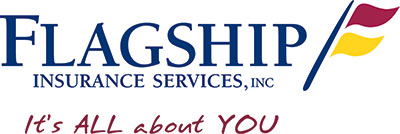
by Flagship Staff | Oct 9, 2017 | Blog
October is Fire Prevention Month. Each year, an average of 370,000 reported home fires result in $6.9 billion in damages. When you add candle fires to that total, it translates to an average of 42 calls a day for a typical fire department!
At this time of year, I typically burn more candles. There’s nothing like walking into my home and smelling pumpkin spice, evergreen, or best of all, baked sugar cookies.
As good as they smell, however, candles can be dangerous, especially if you’re not careful. If you like to burn candles during these colder months and holidays, please keep these important safety tips in mind.
1. Keep candles away from children and pets: While candles look nice on the coffee table and add ambiance to your living room, a passing child or wagging tail can easily tip them over.
2. Keep matches and lighters in a safe place: Lighting materials should be stored up high and out of sight in a kitchen cupboard, pantry, or even a closet. When I was younger, my neighborhood friends and I were fascinated with fire. Fortunately, we never caused any significant fire damage to our homes … but we did come close.
3. Avoid using candles in the bedroom: Approximately one-third of candle fires start in a bedroom and one-half of fire deaths happen between midnight and 6:00 am.
4. Have several candle holders on hand: Candles come in many shapes and sizes so you should have the right-size holder for the candles you like to burn. And it’s important to make sure candle holders are placed on durable heat-resistant surfaces.
5. Toss the candle if it’s two inches or less: Replacing a candle more frequently costs far less than replacing your home. Don’t let a candle burn to close to the holder.
6. Avoid using water to extinguish the candle: Hot wax can splatter in all directions if doused with water. And the temperature change could cause a glass container to crack or break. Consider using a snuffer to extinguish the candle.
7. Never use candles during a power outage or as a night light: Flashlights, or other battery powered lights, are much safer than candles. Night lights are also much safer and fairly inexpensive.
8. Always keep an eye on the candle: Don’t leave a candle in an unattended room for a significant period of time. A few years ago an entire apartment complex was destroyed here in West Bend when a candle was left unattended.
9. Always follow the manufacturer’s safety recommendations: Manufacturers want you to enjoy their candles so follow their recommendations.
10. Use common sense: Make sure the area around your candle is free of clutter. Also watch for sporadic airflow around the candle which can cause the flame to shift direction. And always make sure the candle is at least 12 inches away from other household items that can burn.
If there is a fire at your home, make sure you and your family get out right away! When everyone is safe, call for help. Never return to a burning home for any reason.
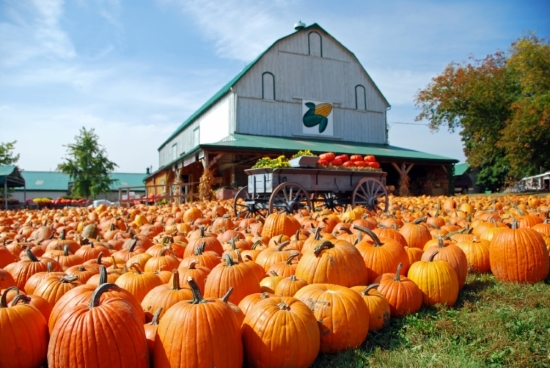
by Flagship Staff | Oct 2, 2017 | Blog
When I was growing up, one of our family traditions was a trip to our local pumpkin patch. I always loved trying to find the best pumpkin, or at least one better than my sister’s. After finding the perfect pumpkin, we ventured into the store to buy caramel apples, homemade apple pies, and apple cider.
After a couple of hours, we jumped back into the family station wagon and headed home. Back in those days, there were no bounce houses, corn mazes, haunted houses, or pumpkin cannons. Just a good old-fashioned farm.
Fast forward to today. Many pumpkin farms are major attractions that draw people from near and far on a nice sunny day, especially when the favorite football team has a bye. If you’re taking your kids or grandkids to a pumpkin farm for the first time, here are some tips you may find helpful.
1. Research. If you’re going to a pumpkin farm for the first time, do your research. Visit their website to find out:
– What activities are available;
– Food options;
– Admission and parking fees; and
– Hours of operation.
I remember taking my kids to a pumpkin farm when we were a young family. It was so expensive that instead of enjoying the day, I worried about the money spent and not having enough.
2. Encourage your kids to walk. I know this can be difficult because before you can utter the words, they’re gone. Their excitement is too much to contain. Keep in mind that during the year farming operations occur. The ground can be very uneven due to the heavy farming equipment. The uneven terrain, along with corn stalks and pumpkin vines, could trip them along the way. While you’d never expect a broken wrist or a twisted ankle at a pumpkin farm, it’s certainly possible.
3. Discuss parking lot safety. The bigger the farm, the more traffic and parking headaches you’ll encounter.
4. Wash your hands. Some of the larger farms have portable bathrooms with hand-washing stations nearby. These stations are great after feeding the goats and before enjoying a picnic lunch. If you don’t know that the farm has hand-washing stations, bring hand sanitizer.
5. Don’t forget the cash. If you’re like me, the only thing you have in your purse or wallet are receipts. I never carry cash because I use my debit card for everything. Keep in mind, however, that smaller farms may only accept cash.
6. Apply sunscreen. A nice fall day can still be warm and sunny.
7. Wear the appropriate shoes and clothes. As I mentioned, today’s farms offer so many different activities, like hay bales to climb, zip lines, pony rides, and corn mazes. Jeans and long-sleeved shirts can help prevent cuts and scrapes. As for shoes, close-toed shoes are the best option. Again, these working farms have fields, gravel paths, and uneven ground. I remember my daughter once insisted on wearing flip-flops. It makes for an interesting time when the flip-flop breaks.
8. Pack plenty of water and light snacks. Hydration is always important when spending time outdoors.
9. Be patient and respectful. While everyone is there to have a good time, it’s possible someone may skip ahead of you in line, the person behind the counter is working slowly, or someone bumps you and you spill your soda. Take a deep breath and think about what’s important.
10. Don’t forget to enjoy yourself. Take plenty of pictures and enjoy the time with your family and friends. Some of my favorite pictures are of my family at our local pumpkin farm.
Do you have any information you’d like to share? I’d love to hear from you. Please share them in the comment box below.
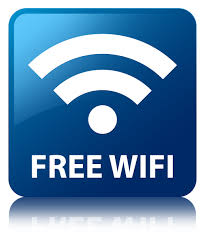
by Flagship Staff | Sep 25, 2017 | Blog
Public Wi-Fi is everywhere — such as coffee shops, hotels and airports, just to name a few. But this convenience comes at a price.
Public hotspots are an easy way for cyber criminals to track your online movements and steal valuable information. How? The same features that make free Wi-Fi attractive to consumers also make them desirable to hackers. It requires no authentication to establish an internet connection. This presents an opportunity for cyber thieves to gain access to unsecured devices on the same network.
Just how scary is unsecured Wi-Fi? Hackers also can use it to distribute malware. If you share files across a public network, the hacker can plant infected software on your computer. And that’s not just on single device. Because office devices are all connected through a network, a hacker with access to one machine through public Wi-Fi can make the jump to access all of the machines and information stored on that company network.
Below and on the following pages are five tips to protect data when using public Wi-Fi, courtesy of Christopher Roach, managing director and national IT practice leader at CBIZ Risk & Advisory Services.
1. Use a VPN
The best solution to prevent your data from being hacked is to use a Virtual Private Network, called a VPN, which creates a network-within-a-network encrypted tunnel to protect your data. Because some networks may block VPN traffic, the VPN should be sent across HTTPS, a protocol for secure communication, which is generally allowed on most networks.
A VPN is a must-have when connecting to your business through an unsecured connection, such as Wi-Fi. Even if a hacker is able to gain access to your data, it will be encrypted. “Since hackers are after an easy target, they’ll likely discard stolen information rather than put it through a lengthly decruption process,” according to Kaspersky Lab, an internet security company.
The expense is less than you would think. According to PC Magazine, the cost of 10 top VPNs is less than $12 a month.
2. Make sure to use encrypted websites
If you are unable to connect to a VPN, instead protect yourself when surfing the web by only accessing websites that begin with “https.” These websites are considered more secure (that’s what the ‘S’ stands for) compared to those that begin with “http.”
In short, “http:” provides a secure connection over an insecure network.
3. Secure your computer
Whether you are in a private hotel room or public coffee shop, Roach recommends selecting the “public network” Wi-Fi option on your computer and not the “home network” or “work network” options. The public network option locks down the connection, ensuring your computer isn’t sharing any files or other sensitive data with machines on the local network. It’s also important to be up-to-date on security patches and use a firewall, such as the one built into most laptops.
Additionally, be aware of your surroundings. If you are working on your laptop in a public place, such as a hotel lobby, someone may be observing your computer screen behind you. If it’s not possible to sit with your laptop screen turned away from everyone else, periodically look around to ensure that no one is watching what you type. Norton, the antivirus and software security company, recommends to purchase a privacy screen, for use in public spaces.
4. Be careful when shopping
Never store your credit card, bank account numbers or business information on a website, or even in your device, while using public Wi-Fi.
This includes using Apple Pay, purchasing an item on Amazon or accessing your online banking account on public Wi-Fi. Use different passwords for your business accounts and personnel accounts.
5. Limit access to social media websites
Social media can be a necessary business tool, but logging into Facebook or LinkedIn and clicking on links from social media sites from a business device may leave your proprietary data at risk, Roach says.
It’s very easy for someone with malicious intent to infect your laptop by merely connecting with you on social media.
In addition, hold off on visiting any sites that require you to log in with a name and password, such as financial institutions. Save visiting those sites until you are on a secure, private network.
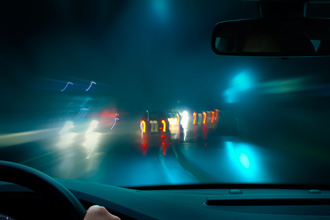
by Flagship Staff | Sep 18, 2017 | Blog
Because the days are getting shorter, we start doing a lot more things in the dark. Walking the dog, running or biking, last-minute yard work, and driving are just a few.
Almost half of all driving deaths happen at night, which is three times greater than during the day.
My parents have disliked driving at night for many years. As I raise my own family, I never understood what the big deal was because I was used to driving my kids around day or night. You jump in the car, put on your seatbelt, turn on your headlights, and if I was lucky, I could listen to the music I like.
I recently turned 40 and has my eyesight changed. I went from perfect vision to keeping a pair of cheaters in my car and nightstand, as well as a pair of transitional glasses at work. Several pairs of glasses aren’t the best birthday presents.
Today I understand why my parents dislike night driving. Unfortunately, as we age, our eyesight changes. Peripheral vision, depth perception, and the ability to see color all get worse in low-light conditions.
As we approach the darker months of the year, here are some tips that may help your night driving:
1. Visit your eye doctor. For years, I put off my doctor’s visit. I just kept holding things out at arm’s length to read. Finally, I got tired of this, and as I already mentioned, I have glasses everywhere.
Our ability to see at night changes as we age. At 40, I need four times more light to drive at night than when I was 19. At age 55, it takes eight times as long to recover from glare than at age 16. Start adding cataracts and degenerative eyes diseases to the mix, and night driving becomes very difficult.
In the next few months, I’ll probably order a pair of glasses just for driving at night. My doctor told me my ability to see at a distance isn’t as good as I think it is. Adding an anti-reflective coating to the lens, which helps reduce glare, can sharpen my vision.
2. Dim your dashboard. I recently drove a company vehicle to a conference. Because of an early-morning start, I traveled the night before. The dashboard was so bright, it made it difficult to see, so I had to use the dimmer switch. Up until this point, I never used a dimmer switch before. After doing some research, I learned that a bright dashboard could hinder your forward vision. Try adjusting the dashboard lights the next time you’re driving at night.
3. Avoid looking at oncoming headlights. As oncoming traffic approaches, it can be very difficult to see. Instead of looking at the headlights to see if the bright beams are on, look off to your right side. While this can be a bit tricky, it can reduce the time your eyes need to recover from the glare. If you can’t safely look away, don’t.
4. Reduce your speed. At night it’s important to reduce your speed. Over driving your headlights can make it even more difficult to see what’s ahead of you. In addition, as deer become more active this time of year, a reduced speed could help you spot them and avoid a collision.
5. Make sure your headlights are adjusted. If you feel your headlights don’t do a good job of lighting up the road, visit your local mechanic. It’s possible they may need adjustment. I had my son’s car headlights adjusted and he told me it made a big difference.
6. Rain, rain, go away. I think driving at night in the rain is awful. I find it very difficult to see road markings, whether on a lighted highway or a dark country road. Make sure your wiper blades are in good working order and your windshield is clean. To help with this, I recently bought some Rain-X. It helps repel water on the windshield.
7. Clean the inside of your windshield. One of my pet peeves is the haze that builds up on the inside of my windshield. I usually don’t notice it until I’m driving at night. Regularly cleaning the inside of your windshield can help reduce nighttime glare.
For more information, visit the links below.
Physcial changes in older drivers that may effect driving skills
No more mistakes when replacing windshield wipers
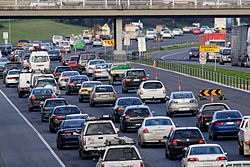
by Flagship Staff | Sep 11, 2017 | Blog
A growing number of individuals today, especially Millennials, choose not to own an automobile. Auto loans and the costs of maintaining a vehicle aren’t appealing to them. With a number of alternative modes of transportation, like trains, buses, and bicycles, owning a vehicle isn’t always necessary. Commuters can easily get to their destinations using popular ride-sharing programs, such as Uber and Lyft.
If you don’t own an automobile, here are some things to consider.
What if you rent a vehicle while you’re on vacation or need to borrow a friend’s truck to haul that new couch you bought at Ikea? Rental car companies will sell you their own insurance, but it’s expensive and comes with hidden fees. What if your friend let his auto insurance lapse or he has low liability limits? Why risk it?
An option could be to add a Named-Non-Owner coverage to your policy. This coverage provides you with personal auto liability protection at a discounted rate over standard auto coverage. It includes Medical Payments in case you’re injured in a car accident. It also provides Uninsured / Underinsured Motorist coverage, which protects you from individuals who drive without auto insurance or who have low limits.
Named–Non-Owner coverage not only protects you as the vehicle driver, you’re also protected if you’re a passenger in a vehicle, like that Uber ride, and when you’re a pedestrian.
You select the desired auto liability limits and add the coverage to your insurance policy. Since West Bend’s Home and Highway is a package policy, this coverage takes the place of typical auto coverage so you can easily bundle it with your homeowner’s coverage.
If you have any questions, or want to review other insurance needs you may have, be sure to talk to your local agent today!

